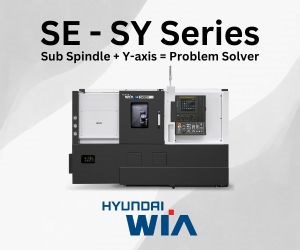Video: Functional Excavator Features 3D-Printed Components
The cab, arm and heat exchanger were all 3D printed on the first excavator to feature major components produced additively.
Share







Takumi USA
Featured Content
View More

Hwacheon Machinery America, Inc.
Featured Content
View More.png;maxWidth=45)
DMG MORI - Cincinnati
Featured Content
View More
Making its debut earlier this year at the ConExpo-Con/Agg trade show for the construction industries was the first fully functional excavator to feature major components produced through 3D printing. A descendent of the 3D-printed car, Project AME (Advanced Manufacturing Excavator) was conceived when members of the Center for Compact and Efficient Fluid Power toured the Oak Ridge National Laboratory facility where the 3D-printed car was made.
According to Oak Ridge National Laboratory:
“By utilizing different 3D printing platforms, materials and processes, researchers were able to show the seamless integration of parts working together on one excavator. The cab where the operator sits, the large hydraulically articulated arm and the heat exchanger were all printed at the Department of Energy's Manufacturing Demonstration Facility (MDF) located at Oak Ridge.”
Those three components were made via three different additive processes, as follows:
- The cab, made of fiber-reinforced polymer, was 3D printed on the MDF's Cincinnati Incorporated Big Area Additive Manufacturing machine.
- The arm was 3D printed in carbon steel using a robotic metal additive system developed by Wolf Robotics and Lincoln Electric. One significant feature: the 3D-printed component allowed for hydraulics to run through channels integrated into the solid part.
- The heat exchanger was made on a powder-bed AM machine from Concept Laser at Volunteer Aerospace in Knoxville, Tennessee.
Oak Ridge National Laboratory worked with student designers from the University of Illinois, the University of Minnesota and Georgia Tech to create novel designs for all of these components.
Want to visit the MDF where Oak Ridge National Laboratory does its additive work? Here’s your chance: This year’s Additive Manufacturing Conference (taking place October 10-12 in Knoxville) includes a tour of this facility.
This blog post originally appeared on additivemanufacturing.media. Video courtesy of Equipment World.
Related Content
-
Digital Thread Enables First-Time-Right 3D Printing
Connecting all stages of manufacturing, from design to postprocessing, helps break down barriers to industrializing additive manufacturing.
-
JTEKT Technology Days Showcases Synergies
The event took place following the company’s completion of its new showroom and decision to merge several of its brands under the JTEKT name.
-
Go Digital: How to Succeed in the Fourth Industrial Revolution With Additive Manufacturing
The digitalization of manufacturing is set to transform production and global supply chains as we know them, and additive manufacturing has been leading the way in many industries.




































